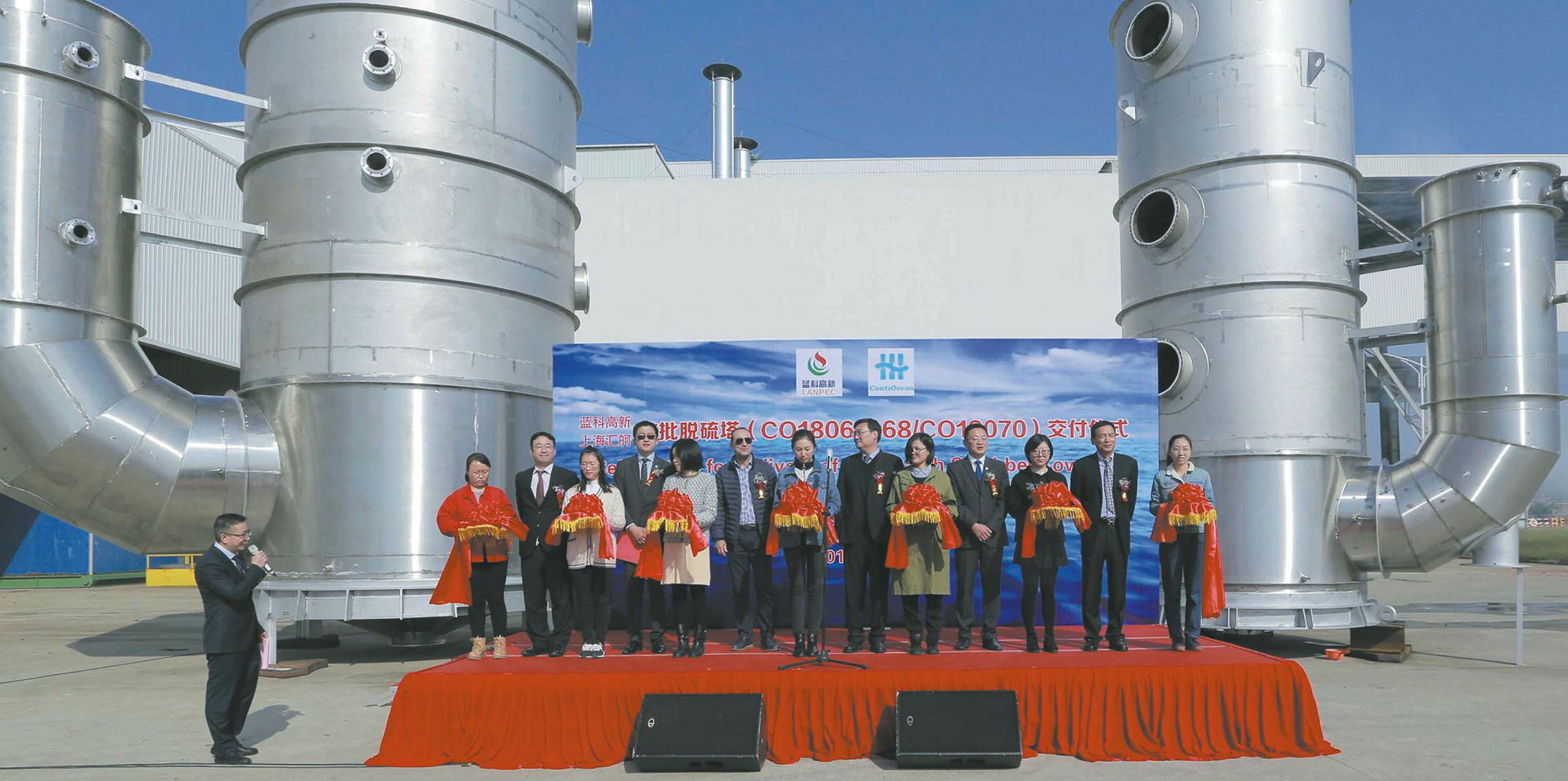Many of the world’s largest manufacturers of exhaust gas cleaning systems (EGCSs) for ships are operating at or near capacity following a surge in orders.
As a result—with the deadline to comply with IMO 2020 less than a year away—some shipowners are turning to smaller suppliers outside of Europe where scrubber manufacturing and installation capacity appears to be on the rise.
One such supplier is China-based ContiOcean. In January, the company emerged as the source of 15 scrubbers that were purchased by Idan Ofer’s Eastern Pacific Shipping (EPS) last year.
EPS—which is based in Singapore where it operates bulkers, tankers and containerships on behalf of affiliates like Quantum Pacific Shipping—funded the purchase with proceeds from a “green” loan facility underwritten by BNP Paribas.
Four EPS vessels—including the 176,900-dwt bulker Mount Faber (built in 2008)—have been equipped with ContiOcean scrubbers to date. According to managing director Zhao Mingzhu, 11 more will follow in the coming months.

As the first EPS ship retrofitted with a scrubber, the Mount Faber installation—which took place at the CHI Zhoushan Shipyard in China—marked an important milestone in the drive to comply with IMO 2020 and a broader push to reduce the organisation’s overall environmental footprint.
It also represented a pivotal moment for ContiOcean, which opened its doors in 2017. In addition to EPS, its backlog of clients include Indian compatriots Great Eastern Shipping and Essar Shipping, among others, like Japanese operator Sanko Steamship.
Mingzhu says the Mount Faber retrofit is a testament to the success of an effort to develop high-quality, competitively priced EGCSs for shipowners—particularly those that have been struggling to line up suppliers in advance of IMO 2020 due to capacity constraints in Scandinavia, the home of three manufacturers that control roughly 70% of the market.

“The calibre of customers like EPS—and the speed with which we’ve been able to complete the first round of retrofits for their fleet—illustrates that situation isn’t as dire as some would have you believe,” Zhao continued.
“While manufacturing and installation capacity may be limited in Europe, operators can find comfort in the fact that there are other, equally reliable options right here in China where companies like ContiOcean are capable of offering installation prior to the end of 2019—and beyond.”
The scrubber market: hot or not?
While classification societies like DNV GL expected the scrubber market to cool down in 2019 due to the lead-time needed for installation and the fact that a number of manufacturers were already working close to full capacity, others predict a spike in activity.
In September, Goldman Sachs published a report that suggested concerns surrounding manufacturing capacity might be overblown.
The investment bank also argued that smaller players would step up to the plate in response to rising demand fuelled by heightened certainty surrounding the implementation date of IMO 2020, as well as other factors—like fuel oil spreads hitting levels that make scrubbers a more economically attractive option than the alternative: low sulphur fuel.
“The scrubber market is currently dominated by three Scandinavian companies—Wartsila, Alfa Laval and Yara—which represent 75% of the market,” the report says. “These incumbent manufacturers likely have a limited appetite to increase capacity significantly because (1) the sector represents a small share of their earnings and (2) the opportunity is likely to be short-lived and may not justify a major disruption to their workforce.
ContiOcean says its signature multi-stream hybrid scrubber system has received approvals-in-principle from Lloyd’s Register, American Bureau of Shipping, Bureau Veritas and DNV GL, which conducted hardware-in-the-loop (HIL) testing in 2018.
At the time, the classification society noted marine exhaust gas cleaning systems represent relatively new technologies, which is why testing the functionality and reliability of such systems is “essential for shipping companies to ensure the compliance and smooth operation during the ship lifecycle.”
The scope covered both functional and failure tests, which ultimately aid in reducing onboard commissioning time and further improve overall operation.
“While market observers, including ship owners, have mentioned concerns that scrubber manufacturing capacity would be a constraint on installation, we believe that scrubber manufacturing has low barriers to entry and that capacity will in fact likely rise relatively quickly. In particular, we believe several smaller manufacturers are already looking to take share from the dominant players.”
While Goldman acknowledged that costs would continue to pose a challenge for many operators, it also predicted the proliferation of several financing options that “should lead to a sharp increase in installation” such as export credit agency financing, additional first-line debt, debt secured by time charter cash flows, and public and private equity capital.
When ContiOcean encounters customers that lack access to affordable sources of capital, it helps coordinate financing from China Export & Credit Insurance Corporation (Sinosure) as well as some of China’s biggest commercial banks.
An advertiser commissioned this article, which was produced by the content marketing team at NHST Global Publications, the publisher of TradeWinds.


